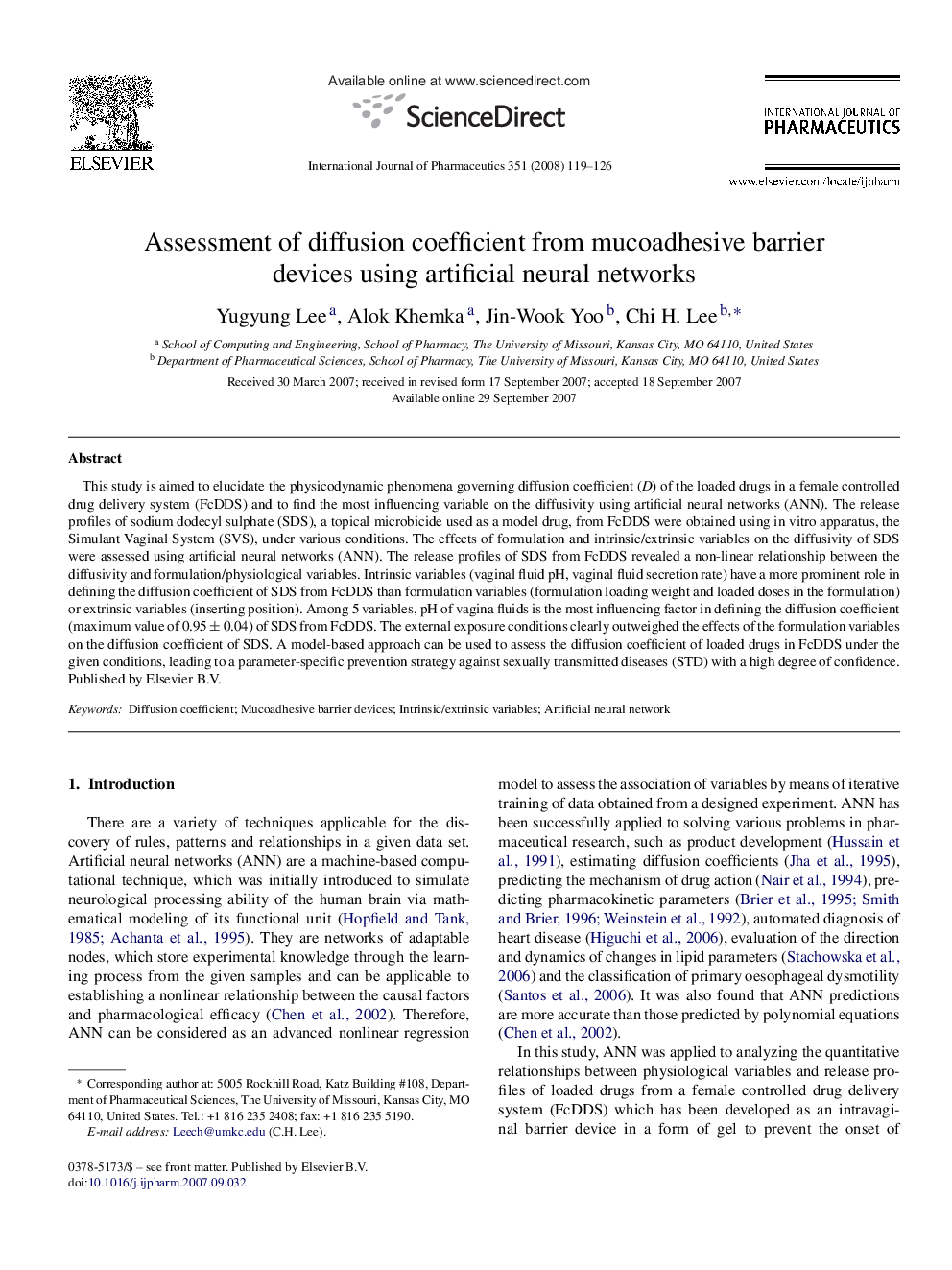| Article ID | Journal | Published Year | Pages | File Type |
|---|---|---|---|---|
| 2505626 | International Journal of Pharmaceutics | 2008 | 8 Pages |
This study is aimed to elucidate the physicodynamic phenomena governing diffusion coefficient (D) of the loaded drugs in a female controlled drug delivery system (FcDDS) and to find the most influencing variable on the diffusivity using artificial neural networks (ANN). The release profiles of sodium dodecyl sulphate (SDS), a topical microbicide used as a model drug, from FcDDS were obtained using in vitro apparatus, the Simulant Vaginal System (SVS), under various conditions. The effects of formulation and intrinsic/extrinsic variables on the diffusivity of SDS were assessed using artificial neural networks (ANN). The release profiles of SDS from FcDDS revealed a non-linear relationship between the diffusivity and formulation/physiological variables. Intrinsic variables (vaginal fluid pH, vaginal fluid secretion rate) have a more prominent role in defining the diffusion coefficient of SDS from FcDDS than formulation variables (formulation loading weight and loaded doses in the formulation) or extrinsic variables (inserting position). Among 5 variables, pH of vagina fluids is the most influencing factor in defining the diffusion coefficient (maximum value of 0.95 ± 0.04) of SDS from FcDDS. The external exposure conditions clearly outweighed the effects of the formulation variables on the diffusion coefficient of SDS. A model-based approach can be used to assess the diffusion coefficient of loaded drugs in FcDDS under the given conditions, leading to a parameter-specific prevention strategy against sexually transmitted diseases (STD) with a high degree of confidence.
